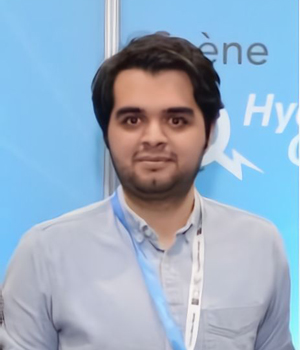The lectures will focus on research projects that have received grants from the Ministry of Natural Resources and Forestry. The programme d’appui à la recherche et à l’innovation du domaine minier (PARIDM) will be explained. Projects that have benefited from PARIDM grants and a conference on the research Chair on the recovery of asbestos residues will be presented.
Research and Innovation Projects in the Mining Sector and the Research Chair on the Valorization of Asbestos Residues
Tuesday, November 18, 2025
Room 301AB – INMQ



1:30 p.m.
The Mining Research and Innovation Support Program – Practical Information

Innovation is essential to maintaining the competitiveness of economies. It helps companies remain at the cutting edge of technological development in a context of global change and adapt to these conditions in order to remain competitive and cope with globalization. The aim of the program is to help R&D and innovation projects between technological maturity levels 3 and 8 inclusively to progress to a higher level in the short term. Eligibility criteria, application selection and eligible expenses will be presented.
1:40 p.m.
Comparative Approach to Geoenvironmental Prediction: Corescanning Compared to Traditional Geochemical Methods Applied to Mine Waste

Every year, mining generates between 4 and 15 Gt of tailings, often rich in sulphides, which can produce acid mine drainage (AMD). This releases metals and acid waste into the environment, threatening water quality. It is therefore crucial to predict the geochemical behaviour of tailings at the exploration stage in order to guide tailings management strategies. This project explores the use of drill core scanning using hyperspectral imaging and XRF analysis to predict acid generation potential (AGP) as a complement to conventional methods (static and kinetic tests). The aim is to reduce the need for time-consuming and costly experimental tests and focus on samples whose behaviour is most uncertain. In this study, 645 samples were characterized by various techniques: automated mineralogy (TIMA), inductively coupled plasma mass spectrometry (ICP-MS), sulphur and carbon speciation, static and kinetic tests in minicells over 16 weeks. The results show that pyrite is the predominant source of sulphur and that calcite and dolomite are the main neutralizing minerals. The main lithologies (porphyries and ultramafic rocks) present a low risk of AMD. The results from the drill core scanning show a 72% agreement with static tests, which rises to 85% when the chemical data is included. These results pave the way for wider integration of high-resolution drill core scanning which, coupled with artificial intelligence, should make it possible to automate and transpose predictive models to deposits with similar geological settings.
2:10 p.m.
Integrating automated core technology with machine learning methods for advanced geoenvironmental assessments

The use of in situ and real-time analytical technologies, such as automated core scanning systems equipped with a range of advanced sensors, is rapidly expanding. These systems integrate a wide variety of spectroscopic tools, including high-resolution and hyperspectral imaging and X-ray fluorescence sensors. Applied directly to drill cores, this technology enables the rapid and systematic acquisition of large volumes of mineralogical and geochemical data. The integration of these large geological datasets with machine learning (ML) methods can open new perspectives in the fields of metallurgy and environment. Machine learning models trained on core scan data can be used to improve the prediction of critical geo-environmental parameters, such as acid generation potential and neutralization capacity. The combination of automated core scanning data and ML-based analyses enables the development of high-resolution environmental prediction models that improve both the efficiency and the spatial accuracy of environmental assessments. Also, this combination can enhance wiser sample selection by identifying geo-environmental risk zones, while significantly reducing the required number of samples to for lengthy and costly laboratory tests. These integrated workflows support the development of predictive tools and strengthen risk mitigation strategies through earlier decision-making, contributing to more proactive mine planning. This study demonstrates the potential of combining advanced automated core scanning technology with ML models to redefine environmental assessment in mining, making it more responsive, scalable, and information rich.
3 p.m.
Innovative Management Approach for Acid-Generating Mine Tailings through Co-Disposal

Nouveau Monde Graphite
A major objective in the design and construction of the tailings and waste rock facilities at Nouveau Monde Graphite’s (NMG) Matawinie mining site is the use of innovative technologies and processes to limit acid mine drainage (AMD) during operations and facilitate site closure. NMG is currently operating a demonstration plant fed by a bulk sample of 40,000 tonnes. The mine tailings generated from this plant have been used to test an innovative co-disposal technique through experimental cells on site and to calibrate predictive models. The challenges and lessons learned from this project will be presented.
3:25 p.m.
Research Chair on the Valorization of Asbestos Tailings


Université de Sherbrooke
The Research Chair on the Valorization of Asbestos Mine Tailings (AMT), based at the Université de Sherbrooke, is a five-year project funded by the Ministère des Ressources naturelles et des Forêts (MRNF) as part of the Quebec Plan for the Development of Critical and Strategic Minerals (QPDCSM). The project aims to document and develop recovery processes applicable to asbestos mine tailings in the Estrie and Chaudière-Appalaches regions, with a focus on critical and strategic minerals (CSMs) such as magnesium and nickel.
The research chair's primary objective is to inventory and disseminate existing knowledge on AMT recovery, and to characterize mine tailings from the Val-des-Sources and Thetford Mines regions. Expected spin-offs include the design and improvement of processes, the identification and elimination of technological obstacles to hydrometallurgical, electrochemical and pyrometallurgical processes, the demonstration of these processes on a mini-pilot scale and the training of highly qualified personnel to operate processing plants.
4 p.m.